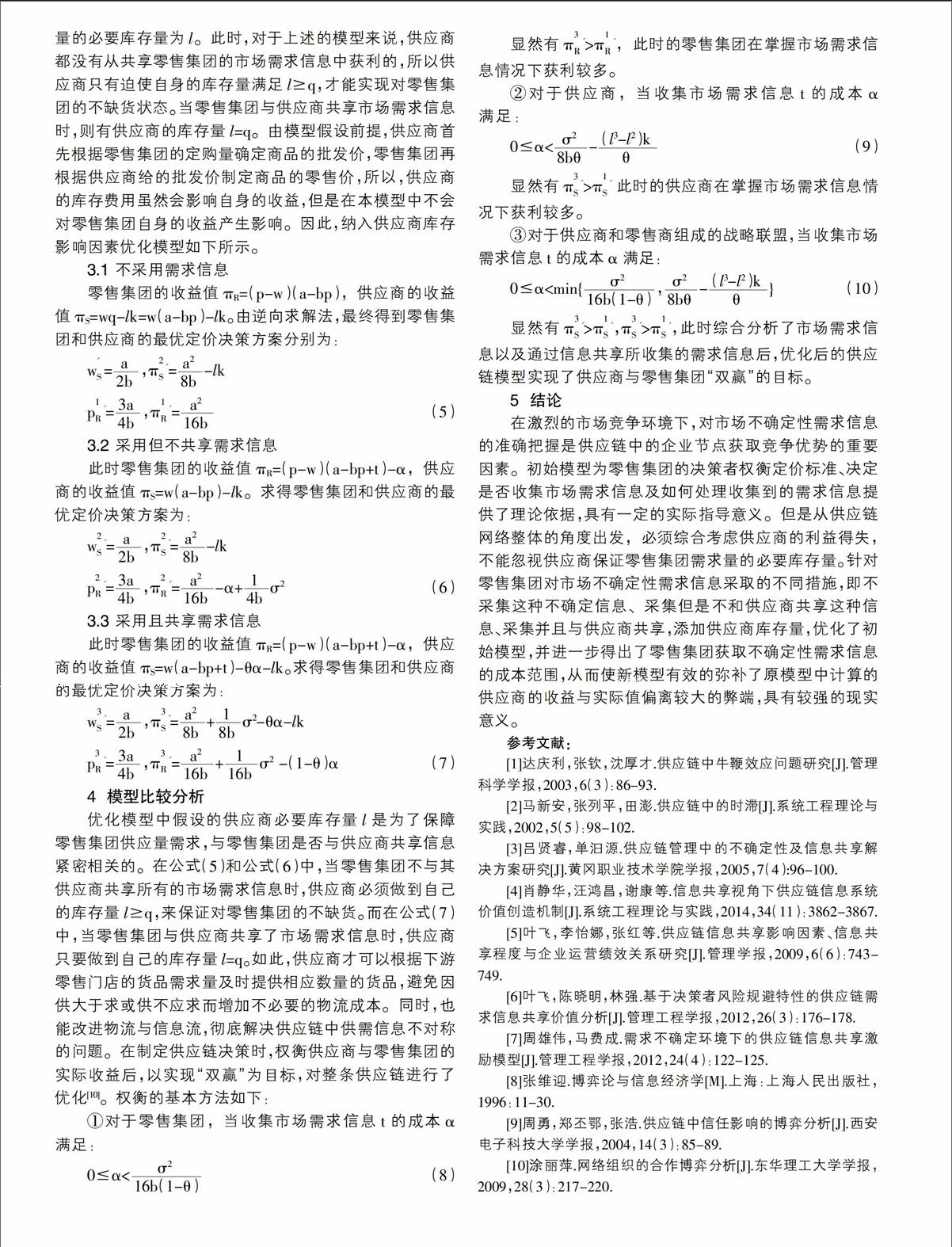基于信息共享策略的供应链定价决策模型比较研究
2017-03-25蒋金柱熊鑫郭名静冯国利
蒋金柱++熊鑫++郭名静++冯国利


摘要:针对牛鞭效应带来供应链负面波动影响的问题,提出了基于信息共享策略的供应链定价决策模型。通过构建针对不同信息共享策略中零售集团和上游供应商的最优定价决策方案,比较分析了库存因素对供应商收益的影响,优化了最优定价决策模型,并给出了零售集团、供应商和联盟整体收益最大化下的信息成本的控制范围。文章结果表明,零售商和供应商决策者必须综合考虑共享需求信息成本和供应商的库存费用成本,才有依据进一步权衡不同信息共享措施的优劣,以实现“双赢”的供应链网络整体优化目标。
Abstract: Aimed at the problem in negative swings in the supply chain with the bullwhip effect, this paper puts forward the pricing decision model of supply chain based on information sharing strategies. By building for retail group, and the upstream supplier's olyptimal pricing decision scheme during different information sharing strategies, the impact of inventory on supplier returns is comparatively analyzed, the optimal pricing decision model is optimized, and gives the retail group, suppliers and alliance under the overall revenue maximization of information cost control. The results show that policy makers of retailers and suppliers must be taken into account the cost of sharing demand information and the cost of the supplier inventory costs, then have the basis to further weigh the merits of different information sharing measures to achieve "win-win" in the overall supply chain network optimization target.
關键词:供应链;牛鞭效应;博弈模型;信息共享
Key words: supply-chain;bullwhip effect;game model;information sharing
中图分类号:F224 文献标识码:A 文章编号:1006-4311(2017)08-0069-03
0 引言
在供应链中,下游微小的市场波动都有可能造成上游制造商制造计划的极大不确定性,即牛鞭效应,这是供应链内理性参与人各自效用最大化的博弈结果[1]。牛鞭效应产生的原因比较多,比如预计供应量小于销售商实际的总需求量,限量供应之下导致销售商之间的博弈;批量订货方式和市场价格的上下波动;供应链内部信息不对称,造成供需信号偏差等[2]。为了控制牛鞭效应的负面影响,有必要按照市场要求科学地协调供应链中的上、下游企业的行为,而协调方法已成为目前学术领域和商业领域共同关注的一项重点课题。
